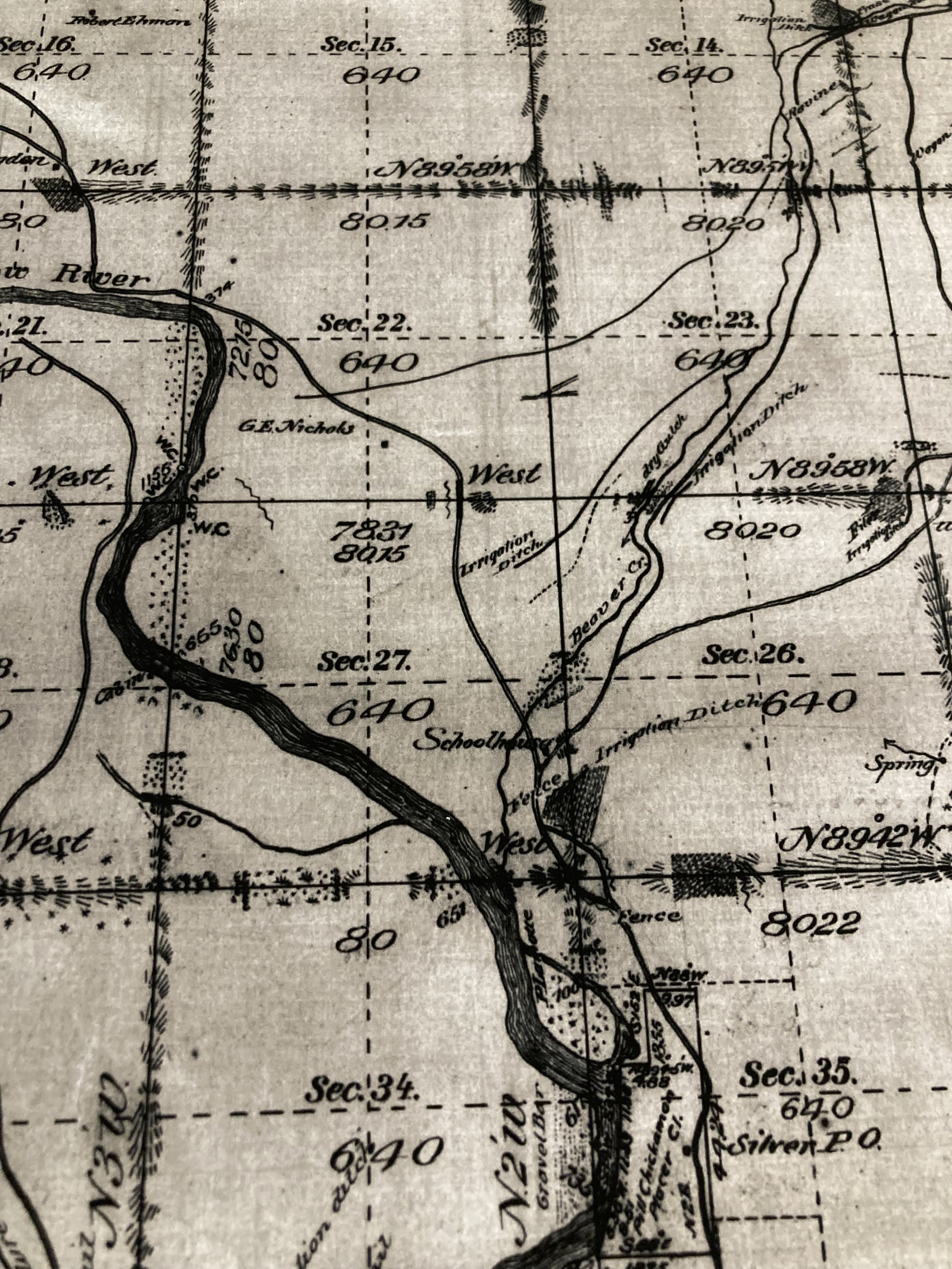Watering the Seed
This spring I was awarded the Mary Kiseau Community Fellowship. Mary was an outstanding naturalist, photographer, Methow Valley steward and an influential mentor of mine in high school. She passed on but this fellowship run by Twispworks lets her legacy live on through two annual recipients and projects.
Here I’ll be sharing more about how this award is helping me kick off my passion project about our valley’s past and future.
The past.
Although I’ve lived in this valley most of my life, I still struggle to envision its history. Especially pre-settler history, how the Methow people lived on the landscape before whites and their narrative of conquest entered the picture. How did this landscape look? What was the river doing? We have amazing resources in this valley to continue learning – especially the Methow Valley Interpretive Center. My process of inquiry and research will lead to a visual (carved wood panel) of the Twisp-Methow confluence before settlement.
1895 Survey
The future.
Living constantly in the present blinds us to the cultural and ecological context of the land we dwell on, as well as what it could become in the future. Before developers purchase water rights and build sprawling homes across shrub steppe, I want to offer the opportunity to the inhabitants of this valley to envision the future. To ask what this culture what it expects of itself. And to plant the seed that change is happening, and will continue to happen around us, until we participate in public process and policy. Another critical aspect of visualizing the future is sourcing ideas for climate adaptation and resilience, from the people who know it here.
View from Mill Hill in Twisp, November 2023
The river.
The river, by definition, knits this valley together. It is precious to every living thing here, and necessarily the foci of this project.
I learn from the river: snorkeling among fish in deep pools, paddling glassy stretches and splashy rapids, floating through the shade of cottonwoods, hearing the river ice form and melt each year, the river touching me as it might touch a beaver or a chinook or a merganser. I learn that the river’s energy bounces from one bank to the next. If you channelize the river, it speeds up and erodes harder. I also see the river’s mosaic surroundings of ditches, riprap, bridges, pilings, irrigation diversions, forests, burnt forest, fields, smooth round granite stones. Exploring the river has allowed me to empathize with it, and to feel the broken pieces left over from extraction and settlement. I want us to notice those dark wounds, and work towards healing them.
Steelhead passage solution with Methow Beaver Project, April 2024
Already, so much energy has been put into restoring this system for fish and natural flows, with much more to do. I’m lucky to lend my bit to restoring creeks and salmon habitat with the Methow Beaver Project. Through a combination of engineering, experimentation and elbow grease we store water for the future. What will work? We recruit beaver, or at least their logic, to develop solutions for our ecosystem, wildlife and people. Restoration is a never-ending striving toward a system that is better for all beings. Working in this field has been a unique invitation to witness this ever changing watershed and the inspiration to develop community-engaged art about it.
This community has never completely turned its back on the river, and I hope it never will. The Methow’s cold, clear and connected waters spell out hope. We’re peeking at a past and a future where life spills forth from the banks of the Methow River. There has been profound change here in the last 100 years. The next 100 years hold much, much more.
Let’s imagine it.



